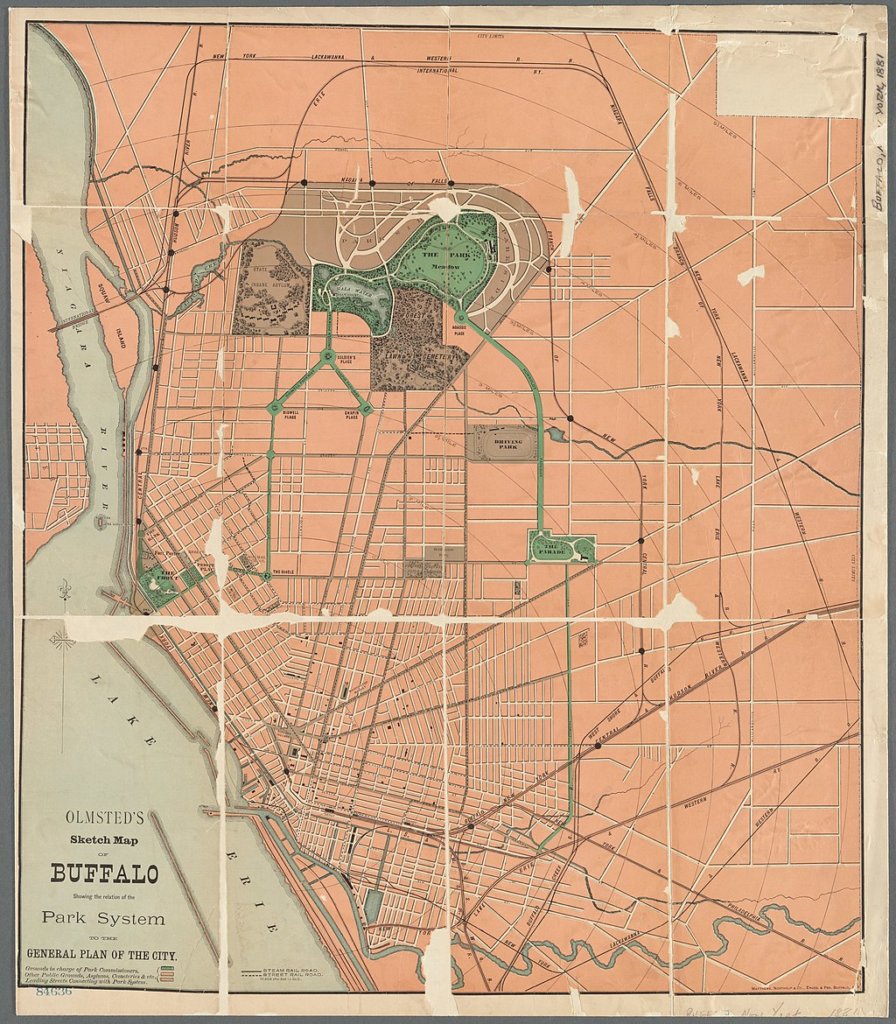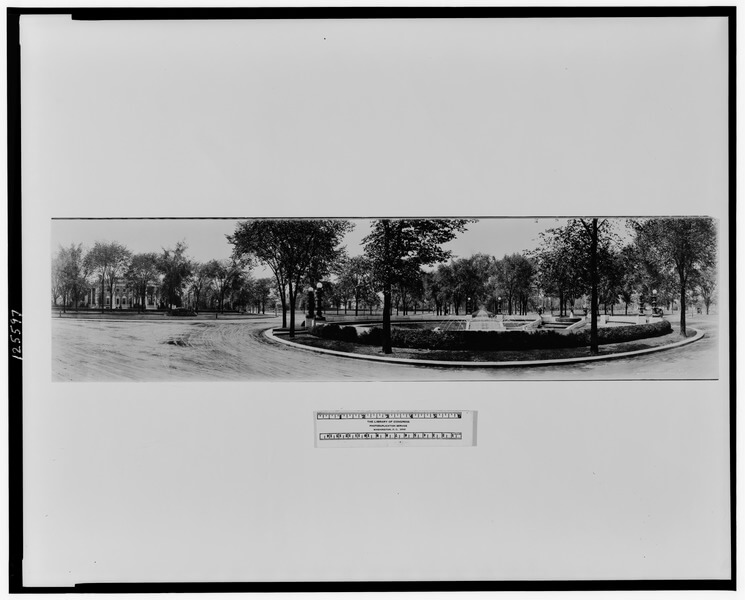New York City’s Central Park gets plenty of fanfare, and rightfully so. But anyone who’s been to Buffalo knows that our parks are nothing to sneeze at.
Many non-locals are unaware that Central Park’s designer, Frederick Law Olmsted, also designed Buffalo’s gorgeous system of parks, including its crown jewel, Delaware Park.
Buffalo’s park system happens to be the country’s first and oldest coordinated system of public parks and parkways.
It was added to the National Register of Historic Places in 1982 and was named one of the best park systems in the world by The Guardian in 2015.
Buffalo’s Olmsted Park System
Parks
Buffalo’s Olmsted park system includes six parks, seven parkways, eight landscaped circles and several smaller spaces, extending throughout the city of Buffalo, from North and South Buffalo all the way to the waterfront. It includes the parks, parkways and circles within the Cazenovia Park–South Park System and Delaware Park–Front Park System.

- Cazenovia Park
- Delaware Park (North Buffalo)
- Front Park
- Martin Luther King, Jr. Park
- Riverside Park
- South Park
Parkways
According to Buffalo Olmsted Parks Conservancy, Olmsted developed the tree-lined parkways and avenues in order to link the six main parks and integrate the park system with the city. In designing the parkways, Olmsted wanted visitors to travel from one park to another without abandoning the green space of the parks, with roads and parkways feeling “more park-like than town-like.”
Parkways include:
- Humboldt Parkway
- Bidwell Parkway
- Chapin Parkway
- Richmond Ave.
- Porter Ave.
- Red Jacket Parkway
- McKinley Parkway
- Humboldt Parkway
- Fillmore Ave. (added in 1874)
Anyone that’s driven down tree-lined Lincoln, Chapin or Bidwell Parkways near Delaware Park will tell you that it feels more like driving through a park due to the large green areas between either side of the roads.
On a nice day, you’ll find plenty of people lounging or playing sports in the grass between the parkways. And the green space on Bidwell Parkway is the site of a popular farmer’s market, fitness classes and a summer concert series.
Circles & Green Spaces
Where parkways meet or join busy city streets, Olmsted also designed spacious circles, providing a safe route for travel and allowing space for flowers, monuments and fountains.
Circles within the Olmsted Park system include:
- Soldiers Place
- Gates
- Colonial
- Ferry
- Symphony
- McKinley
- McClellan
- Agassiz (altered)
- The Bank (lost)

Other spaces within the park system include:
- Richardson Olmsted Complex (formerly ground of NY Asylum for the Insane)
- Columbus & Perla Parks (formerly Prospect Park)
- Site of City Honors High School (formerly Masten Place)Days Park
- Johnson Park
- Bennett Place (now part of JFK Park)
- Heacock Place
- Parkside Neighborhood in North Buffalo, home to our Main Jewett Apartments
- The Terrace (lost)
History of Olmsted Parks
According to Buffalo Olmsted Parks Conservancy, upon touring Buffalo in 1868, Olmsted convinced Buffalo’s leaders that multiple parks would best serve the city’s needs, as opposed to one large park, as in New York City.
Buffalo’s park system was originally designed by Olmsted and Calvert Vaux between 1868 and 1896.
The first three parks that were created were The Park (now Delaware Park), The Front (now Front Park) and the Parade (now Martin Luther King Jr. Park).

Delaware Park History
Residents of our Delaware Park Apartments are lucky to live within walking distance to Delaware Park, the largest park in the Buffalo Olmsted park system and one of Buffalo’s biggest attractions, providing recreation and gorgeous scenery all year round.
Located in North Buffalo, Delaware Park spans 350 acres. It was completed in 1871 and is considered the centerpiece of the Buffalo parks system.
Originally named “The Park” by Olmsted, Delaware Park is divided into two areas: the 243-acre “Meadow Park” on the east, which includes what is now Ring Road, and the 133-acre “Water Park” on the west, which includes what is now Hoyt Lake.
At the time Delaware Park was built, the area was virtually uninhabited, according to Francis R. Kowsky’s “Municipal Parks and City Planning: Frederick Law Olmsted’s Buffalo Park and Parkway System.” Its landscape was what Olmsted and Vaux called a “country park” due to its rolling meadows and trees.
According to Kowsky, Olmsted was drawn to the park both because of the natural landscape as well as its proximity to Forest Lawn Cemetery, which was built in 1853.

The designers also dammed Scajaquada Creek, which ran through the park, in order to create a lake for boating in summer and skating in winter — what is today known as Hoyt Lake, originally called “Gala Water,” according to the Conservancy.
Other notable features of Delaware Park were developed later, including the Buffalo Zoo in 1875, Marcy Casino in 1901, the Rose Garden in 1912 and the Japanese Garden in 1970.
Delaware Park Today
According to the Conservancy, Olmsted had predicted that Delaware Park was destined to take a “distinguished position among the parks of the world,” and he wasn’t wrong.
The park was named one of the Great Places in America by the American Planning Association in 2014 and remains an extremely popular destination for tourists and locals alike.

In recent years a full golf course, tennis courts, a basketball court, a soccer field and a playground have been added to the park, providing more recreational activities for visitors. The Buffalo Zoo is located right within the park, allowing families circling the park to peek at the lounging bison and listen to the animals within the zoo.
Buffalonians are fortunate to have one of the world’s best park systems right at their fingertips. And residents of our apartment communities in North Buffalo and Parkside get the advantage of having beautiful Delaware Park as their own backyard, gym and playground.
What’s your favorite part of Buffalo’s Olmsted Parks system? Let us know in the comments below.

 Fair Housing Notice
Fair Housing Notice 